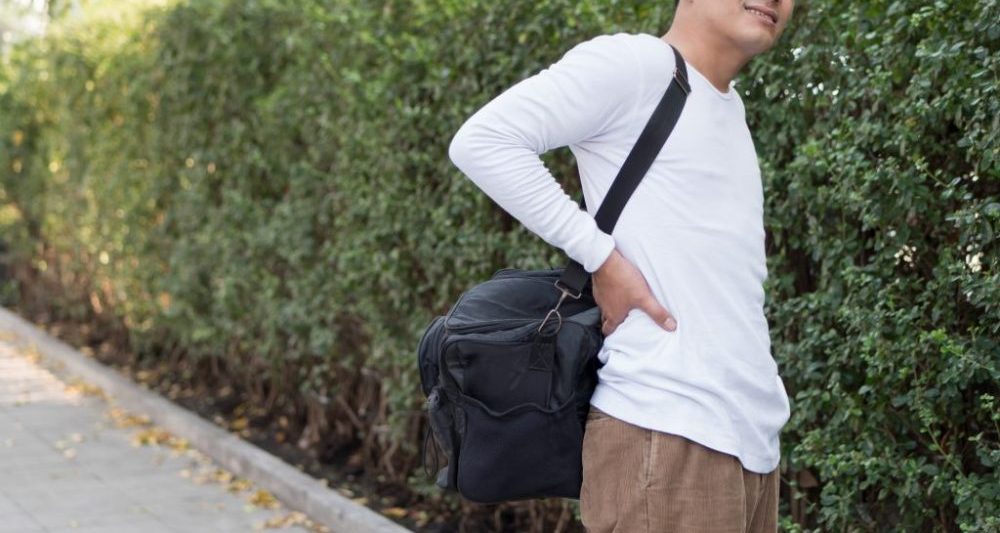Back Discomfort Travel Tips: Stay Comfortable on Flights and Road Trips This Summer

Why Travel Can Trigger Back Discomfort
Summer is the season for adventures, but if you live with back discomfort, traveling can come with extra challenges. Whether it’s sitting for hours on a flight, long drives across state lines, or sleeping in an unfamiliar bed, travel can easily leave your back feeling tight, sore, and fatigued.
But travel doesn’t have to mean discomfort. With a few proactive steps, you can protect your back and enjoy your holiday plans with greater ease. Here are our top back discomfort travel tips to keep you moving comfortably this summer.
Why Back Discomfort Shouldn’t Cancel Your Summer Plans
If back discomfort has you second-guessing your travel plans, you’re not alone. Many people avoid long trips or fun outings out of fear their back won’t hold up. But the truth is, with the right preparation and support, you can enjoy travel without sacrificing your comfort. Summer is about creating memories—whether you’re exploring a new city, visiting loved ones, or relaxing by the beach. Don’t let hesitation about your back stop you from living fully.
One of the most empowering steps you can take is to seek help before you travel. At Power Physical Therapy, we work with individuals who want to stay mobile, strong, and independent—even if they’ve dealt with back discomfort for years. A Free Discovery Visit gives you a chance to speak with a specialist, identify what’s contributing to your discomfort, and get personalized strategies to help you travel with confidence.
Remember, you don’t have to wait for discomfort to become severe before getting support. The earlier you take action, the more you can enjoy the season ahead. Your summer doesn’t have to be defined by back tension or missed opportunities—it can be full of movement, connection, and comfort.
Choosing the Right Travel Gear for Back Support
One of the most overlooked aspects of discomfort-free travel is using the right gear. When it comes to supporting your back on the go, even small adjustments can make a big difference. Start with your luggage—opt for a rolling suitcase with a telescoping handle that allows you to push or pull with minimal strain. Carrying heavy bags on one shoulder or bending repeatedly to lift them can quickly add up, leading to increased discomfort.
If you’re flying, consider a lumbar support cushion or neck pillow to maintain natural spinal alignment during the flight. For long car rides, a rolled-up towel or portable lumbar roll placed at your lower back can help maintain posture and reduce pressure. The more you support your spine during these long periods of sitting, the less likely you are to feel stiff or sore when you reach your destination.
Finally, wear comfortable shoes with arch support, especially if your trip involves a lot of walking or standing. Poor footwear can throw off your posture, adding unnecessary stress to your lower back. By making these simple choices, you can travel with less discomfort and more enjoyment.
Back Discomfort Travel Tips: Prep Before You Go
Preparation is key when it comes to preventing back discomfort. Before you pack your bags, consider these steps:
- Stretch and strengthen: Include gentle stretching and core-strengthening exercises in the days leading up to your trip. Focus on your hips, hamstrings, and lower back to improve mobility.
- Use the right luggage: Choose a suitcase with wheels and a telescopic handle. Avoid heavy shoulder bags that strain one side of your body.
- Pack smart: Distribute weight evenly and avoid overpacking. Every extra pound can add strain to your spine.
By preparing your body ahead of time, you’ll reduce the likelihood of discomfort on the journey.
Back Discomfort Travel Tips: In the Car
Long drives can place a lot of pressure on your spine. Use these tips to stay comfortable:
- Adjust your seat: Your seat should support your lower back and allow your knees to be level with or slightly below your hips.
- Bring a lumbar roll: A small pillow or rolled towel placed at the base of your spine can encourage proper posture.
- Take breaks often: Stop every 60-90 minutes to get out, stretch, and move around. Walking helps restore circulation and reduce stiffness.
Remember, movement is medicine. Even a short walk can refresh your body and relieve tension.
Back Discomfort Travel Tips: On the Plane
Flying? Airplane seats are rarely spine-friendly. Here’s how to make the experience more manageable:
- Board early to give yourself time to get settled.
- Bring support: Neck pillows and lumbar cushions can improve alignment.
- Move frequently: Get up and walk the aisle when safe, and do seated stretches like ankle circles or gentle spinal twists.
- Hydrate: Staying hydrated keeps your discs and joints healthy.
Small changes like these can make a long flight more tolerable and help you feel better when you land.
Back Discomfort Travel Tips: Hotel Hacks for Your Back
When you arrive at your destination, don’t assume your back will recover on its own. Be proactive:
- Check the mattress: If it’s too soft, place a folded blanket underneath for added firmness. A rolled towel under your knees or lower back can also help.
- Unpack smart: Don’t live out of your suitcase. Constantly bending over it can strain your back.
- Continue your routine: Keep up your mobility and stretching exercises even while away.
A few simple routines each morning and night can keep you feeling your best while traveling.
Back Discomfort Travel Tips: When to Seek Help
If your back discomfort is getting worse, don’t ignore it. Many people wait until the discomfort disrupts their trip or sidelines their activities. Instead, get ahead of the issue:
- Listen to your body: Discomfort that lingers or interferes with your sleep, walking, or sitting is a sign to take action.
- Book a Free Discomfort Assessment: At Power Physical Therapy, we help individuals prepare for travel and summer activities with one-on-one strategies that protect and strengthen the back.
Our Free Discomfort Assessment helps you understand where your discomfort is coming from and what can be done to improve it—without pills, injections, or downtime.
Staying Active During Downtime: Movement Matters
It’s tempting to stay still on long trips—especially during flights, bus rides, or road trips. But prolonged sitting can tighten muscles and stiffen joints, especially in the lower back. That’s why one of the best back discomfort travel tips is to incorporate gentle movement whenever possible. Even just a few minutes of walking or stretching every hour can help increase circulation, reduce muscle tension, and keep your spine feeling better.
If you’re flying, take advantage of aisle walks or stand up and stretch near the back of the plane. For road trips, schedule rest stops every 1–2 hours to get out, walk around, and do a few standing stretches. Try gentle back bends, knee lifts, or hamstring stretches to loosen up. These small actions prevent the stiffness that builds up during long periods of sitting.
When you arrive at your destination, a short walk or a few mobility exercises can reset your body. Think of movement as your secret weapon—it doesn’t need to be intense to be effective. It just needs to be consistent. Keeping your body in motion is one of the simplest ways to reduce travel-related discomfort.
Travel Smarter This Summer
You deserve to enjoy your summer trips without worrying about back discomfort at every turn. With the right preparation, movement strategies, and support, you can make your travels more comfortable and enjoyable.
Don’t let discomfort derail your plans. Book your Free Assessment today to ease your discomfort and start your next journey with confidence.
Call Power Physical Therapy at (714) 557-2100 or request your Free Assessment online at https://powerptsm.com/request-free-discovery-visit/
